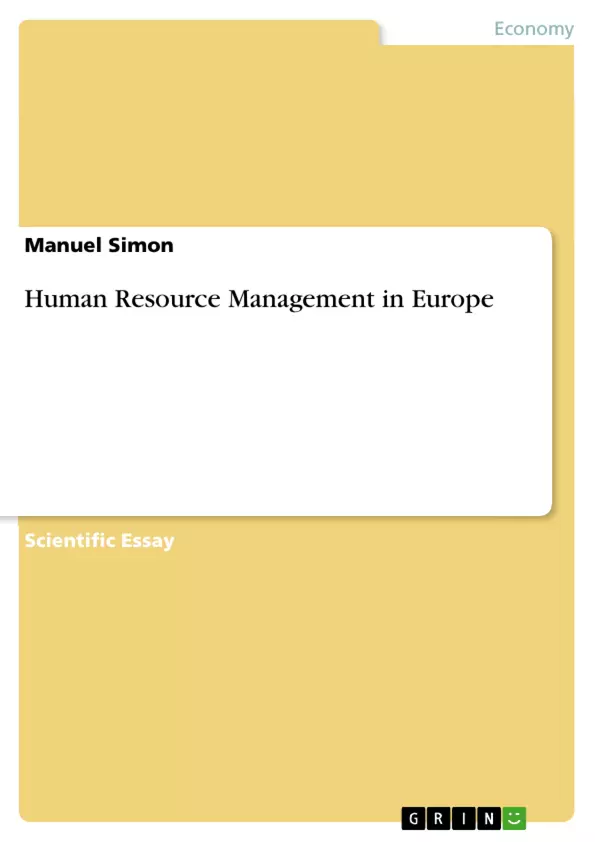This paper analyzes in how far human resource management (HRM) of the United States of America (USA) will influence European HR practices. When investigating the special features of American and European HRM it becomes obvious that the USA is characterized by low level of state interference and stronger emphasize on individualism. In contrast, in Europe greater involvement of the states and European supranational agencies as well as huge organizational and managerial responsibility towards employees is usual. What is more, trade unions have a high social legitimacy in Europe compared to the USA. Nevertheless, due to different cultural and institutional perspectives of the individual European countries it is difficult to define a common HRM model within Europe. Hence, the discussion of various regional clusters arose in recent years. Although some European countries move towards directional convergence (whether countries share the same trend), final convergence (whether countries are becoming more alike) is still far from being realized. Consequently, it should be assumed that neither American HR practices will significantly influence European HRM nor that Europe will lead towards convergence of a common model in the future. Countries will continue to be different in their HR practices due to their unique cultural and institutional frameworks.
Inhaltsverzeichnis (Table of Contents)
- Introduction
- HRM in the United States of America.
- Private enterprise culture
- Low level of state involvement
- Antagonism of US management to trade unionism
- HRM in Europe
- Characteristics of European HRM
- Legislative framework
- Trade unions and consultation
- Patterns of ownership.
- Regional clusters
- Convergence versus divergence within Europe
- The Influence of American HRM on Europe
- Factors against American HRM influence
- Factors in favor of American HRM influence
- Concluding Remarks
Zielsetzung und Themenschwerpunkte (Objectives and Key Themes)
This paper aims to analyze the potential influence of American HRM practices on European HR practices. It investigates the key differences between the US and European HRM models, including the role of state involvement, trade unions, and cultural factors. The paper explores whether European countries are moving toward a unified HRM model or if they will remain distinct due to their country-specificities.
- The influence of American HRM on European HR practices
- The unique characteristics of the US and European HRM models
- The role of cultural and institutional frameworks in shaping HRM practices
- The concept of convergence and divergence within European HRM
- The importance of regional clusters and their impact on HRM practices
Zusammenfassung der Kapitel (Chapter Summaries)
- Introduction: This chapter introduces the topic of HRM in Europe and highlights the diverse economic, political, and cultural landscape of the European Union. It establishes the objective of the paper, which is to analyze the potential influence of American HRM on European practices.
- HRM in the United States of America: This chapter explores the key features of American HRM, emphasizing its private enterprise culture, low level of state involvement, and the antagonism between management and trade unions.
- HRM in Europe: This chapter delves into the characteristics of European HRM, including its legislative framework, the role of trade unions, and the impact of patterns of ownership. It also explores the concept of regional clusters and the ongoing debate about convergence and divergence within Europe.
Schlüsselwörter (Keywords)
This paper explores the main concepts and themes within human resource management, focusing on the comparative analysis of American and European HRM models. It emphasizes the role of cultural, institutional, and political factors in shaping these practices, examining the significance of regional clusters and the debate on convergence versus divergence within Europe. Key terms include human resource management (HRM), globalization, state involvement, trade unions, regional clusters, convergence, and divergence.
- Citation du texte
- Manuel Simon (Auteur), 2006, Human Resource Management in Europe, Munich, GRIN Verlag, https://www.grin.com/document/67166



